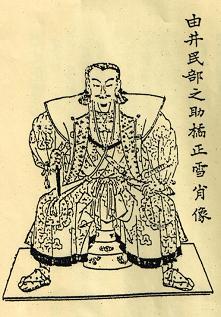 Image of Yui Shosetsu. From www.app.k-server.info
Image of Yui Shosetsu. From www.app.k-server.info (The Keian Incident, or the Revolt of Yui Shōsetsu) 4th year of Keian, 1651
In the 4th month of the 4th year of Keian (1651), the third Shogun of the Tokugawa Bakufu, Iemitsu, died of illness. His successor, the 11 year old Ietsuna, had only just been appointed to that position when in the 6th month of the same year, Yui Shōsetsu, a military scholar of the Kusunoki school who had opened his own academy in the Kanda district of Edo, conspired with Marubashi Chūya, who himself had opened a school teaching spear techniques at Hōzōin (located near Yui’s academy), and other rōnin (masterless samurai) to overthrow the Bakufu. (pg.166)
Marubashi, together with his supporters, would set fire to a Bakufu saltpeter warehouse at Koishikawa and set about lighting spot fires through the city in an attempt to create a major conflagration. While this was underway, Marubashi would infiltrate Edo castle while pretending to be Tokugawa Yorinobu, the head of the Kii branch of the Tokugawa household (one of the three major branches of that family), and if successful in his deception, would then abduct the young Shogun. In the meantime Yui Shōsetsu would attack a Bakufu vault located at Kunōzan in Sumpu (Suruga) province. After making off with the million or so ryō (gold or silver ingots) stored there, Yui would head to Sumpu castle and there wait for the arrival of Marubashi with the young Shogun in tow. (pg.167)
This would then provide the impetus for revolts to break out in both Kyoto and Osaka. Some 230,000 rōnin would then assemble, the largest such gathering since the battle of Sekigahara 51 years earlier, and together they would bring about the downfall of the Tokugawa.
However there was an informant in their midst. Marubashi soon found his school surrounded by agents of the Bakufu and was taken prisoner. Meanwhile Yui Shōsetsu, while lodging at the Umeya, a tea house located in Sumpu, was himself also surrounded by Bakufu agents. However he managed to commit suicide before he could be taken prisoner. In all, around 100 or so people were implicated in the plot, and an even greater number were subject to punishment. (pg.167)
The Bakufu used this incident as the impetus for the introduction of a system whereby they would acknowledge the adoptees of daimyō and hatamoto (the most trusted of retainer) families in danger of dying out, and thus put an end to the increase in rōnin that would accompany the death of the last heir of a dynasty. (pg.167)
(The crucifixion of Hirai Gonpachi at Suzugamori) 7th year of Enpō, 1679
Hirai Gonpachi was a samurai of Tottori province, and the eldest son of Hirai Shōzaemon. He was particularly renowned in the province as both a swordsman and jujutsu practitioner. However when he turned 17 he had a falling out with his father and absconded, eventually ending up in Edo. Gonpachi was attractive, and was quite proficient at the ‘Kaga’ style of singing that was popular at the time. In time he became a member of the household of a more prominent samurai family, and often visited the pleasure quarters of Yoshiwara. It was during one of these visits that Gonpachi fell head over heels for a Tayū (or high class courtesan) by the name of Ko-murasaki of the Miura establishment (i.e., brothel). Obviously Gonpachi was not a wealthy man, hence in order to raise enough funds to meet with Ko-murasaki he decided to hire himself out as a “hitman” of sorts, carrying out assassinations for money. It was said that over the seven years that he was active in this role, he was responsible for the deaths of 132 people. (pg.167)
Gonpachi’s luck ran out in the 6th year of Enpō (1678), when he was found guilty of having murdered a silk merchant at Musashino-Kumaya for the sum of 100 ryō. He was sentenced to die by crucifixion. Gonpachi was executed in the 11th month of the 7th year of Enpō at Suzugamori, and his remains were later buried in secret at Tōshōji temple located in the Meguro-ward. After a while, Gonpachi’s grave was visited by a woman of around 21 years of age, where she donated her 5 ryō in wages. She did this a number of times, praying before the grave, before one day committing suicide at the same spot. It was Ko-murasaki of the Miura establishment. (pg.167)
This (tragic?) love story proved very popular among the commoners of old Edo, and it was later depicted in various art forms, including Kabuki theatre and puppetry. (pg.167)
(The declaration of the ‘Edict Forbidding Cruelties to Living Things’ – Shōrui-awaremi-no-rei), 4th year of Jōkyō, 1687
Tsunayoshi, the fifth Tokugawa Shogun, had no further children after the death of his son Tokumatsu (whom he expected to inherit his position). According to the monk Ryūkō of the Shingon sect, to whom Tsunayoshi’s mother Keishōin was particularly devoted, Tsunayoshi’s lack of heirs was a direct result of his having killed a large number of living beings in a previous life. This message was reiterated time and again to Tsunayoshi by Ryūkō, particularly the fact that many of those life forms had been born during the Year of the Dog. This had a profound impact on Tsunayoshi’s psyche, so much so that he began to take pity on dogs, and would in turn issue an ‘edict forbidding cruelties to living things’.
The edit stated that all dogs were to be referred to as “My lord dog” (O-inu sama), and a number of kennels were established in the suburbs of Edo where dogs could receive the very best of care. On the other hand, a samurai who shot a sparrow with an arrow in order to use it in medicine for his sick son was executed at Kozukatsubara together with his son, while those who merely witnessed the act were themselves sentenced to exile on Hachijōjima island. (pgs.167-168)
Tsunayoshi was cursed with a paranoid personality, so much so that his retainers, fearing that they might be put to death on a whim, would read as much as they could into his orders, and so exercised all sorts of cruelties on their subordinates. For 24 years, until his death in the 6th year of Eiroku (1709), Tsunayoshi was the source of great hardship to his subjects, and tens of thousands of people were either put to death or otherwise punished during his reign. (pg.168)
(The revenge of the rōnin of Akō province – aka Chūshingura, aka The 47 Rōnin, aka The 47 Loyal Retainers), 15th year of Genroku, 1702
In the early hours of the 15th day of the 12th month of 15th year of Genroku (1702), 47 rōnin retainers from Akō province (now part of Hyōgō prefecture) fought their way to the centre of the principle Edo residence of Kira Kōzuke no Suke Yoshinaka. After two hours of fighting Kira’s own retainers and searching high and low, they eventually found Yoshinaka, and cut off his head. (pg.168)
The spark that ignited passions to such an extent that it would result in Yoshinaka’s death occurred during the 3rd month of the previous year. The lord of Akō province, Asano Naganori, was visiting Edo in order to pay his annual respects and partake in rituals associated with his position as an imperial messenger. However, it was while he was resident in Edo castle that he fell into an argument with Yoshinaka, himself a highly placed official of the Bakufu, and confronting Yoshinaka in the Matsu no Rōka hallway, drew his short sword and wounded Yoshinaka. (pg.168)
Drawing weapons without permission within Edo castle was strictly forbidden, hence Naganori soon found himself ordered to commit ritual suicide (seppuku) on the day after the incident with Yoshinaka. The name and property of the Asano family of Akō was thereafter confiscated, and disappeared from Edo altogether.
However, one of the Asano’s principle retainers, Ōishi Kuranosuke Yoshio, together with others from Akō province spent a year and nine months undergoing various hardships as all rōnin did following the death or disbandment of their lord and his household. They also practiced theatre and puppetry during their time in exile, all this while secretly planning to take revenge against Yoshinaka for causing the death of their lord. The people of Edo, seeking to find some outlet for the distaste they felt for Tokugawa Tsunayoshi’s reign, upheld the rōnin of Akō as the pinnacle of the ideal of the “loyal retainer”, whose act of assassination was justified and, in time, glorified by the common folk. (pgs.168-169)
(The Ejima – Ikushima Incident), 4th year of Shōtoku, 1714
In the 1st month of the 4th year of Shōtoku (1714), a retainer of the mother of the seventh Tokugawa Shogun, Ietsugu, who went by the name of Ejima of the Ō-oku (aka the ‘Great Interior’, basically the female quarters within Edo castle), was assigned as keeper of the mausoleum to Shogun Ienobu at Sōjōji. While on the way there, Ejima stopped at the Yamamura theatre located in the town of Kobiki, where she booked out the entire top floor of the theatre in order to watch plays. Ejima soon imbibed the hospitality of Ikushima Shingorō, a Kabuki actor who would keep guests happy in between performances as an employee of the theatre. Ejima enjoyed Ikushima’s company so much that she eventually arrived back at Edo castle far later than originally scheduled. (pg.169)
While going to watch theatre while engaged on official duty was a violation of the “Regulations for the Great Interior”, it was often silently permitted. However the continuing disruptions to the discipline of the Ō-oku, the continuing feud between the legal spouse of Ienobu, Teieiin, and his concubine Gekkōin, and the frequent meddling by members of the Ō-oku in the affairs of state with their demands for relatives or favours from merchants irked the Bakufu’s senior retainer Ii Naomori and others so much that they decided to use Ejima’s transgression as an opportunity to clamp down on the Ō-oku’s activities. (pg.170)
While Ejima bore many responsibilities, she was found guilty of having spent too long in the company of actors at the theatre and sentenced to death. This penalty was later lessened to that of exile on Hachijōjima. The intervention of Gekkōin eventually saw Ejima exiled to Takatōri in Shinano province. For his part, Shingorō was exiled to Mitakujima, while the Yamamura theatre was abolished. Ejima’s elder brother, the hatamoto retainer Hirai Heiueimon, was executed by beheading. Next to 70 women of the Ō-oku were banished from the castle, while another 150 were assigned to assist the medical officials of the Ō-oku and clothes merchants of the Bakufu’s capital. (pg.170)
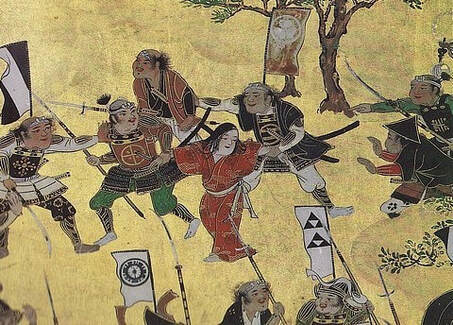
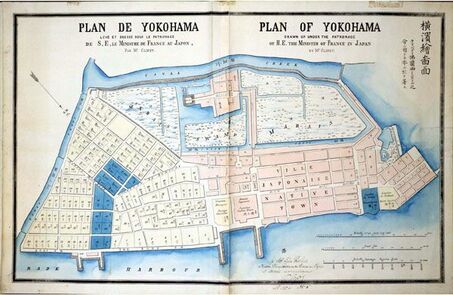
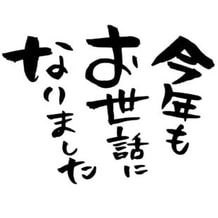
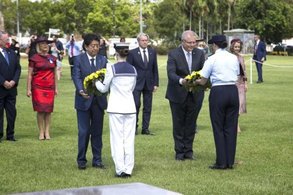
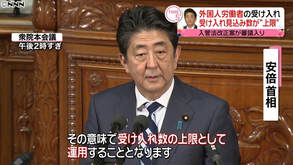
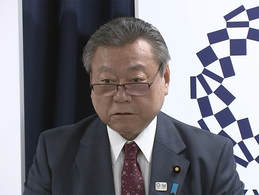
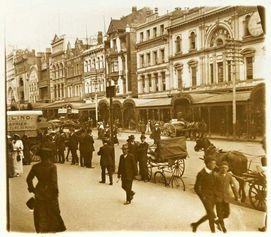
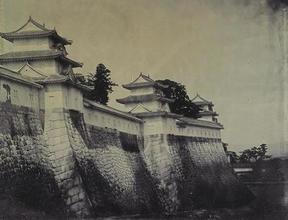
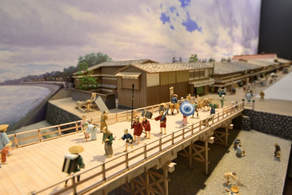
 RSS Feed
RSS Feed